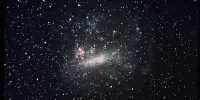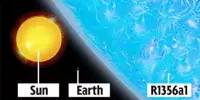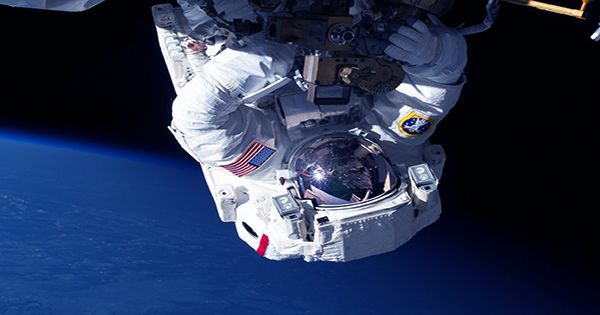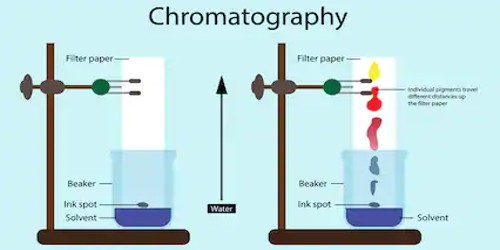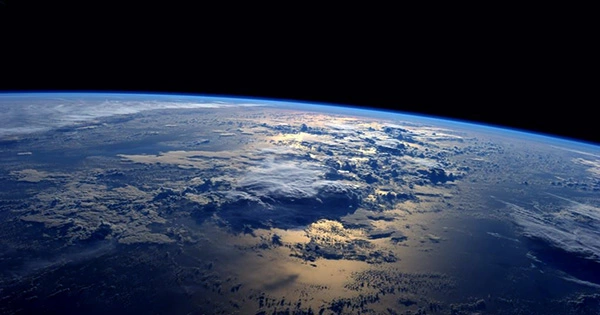A moon-forming region around exoplanet PDS 70c is clearly visible in new high-resolution observations. For the first time, astronomers have been able to determine the size and mass of the ring-shaped region.
Astronomers from the Center for Astrophysics, Harvard, and the Smithsonian Institution have assisted in detecting the presence of a moon-forming region around an exoplanet, a planet outside our Solar System. The new findings, which were published in The Astrophysical Journal Letters, could help explain how moons and planets form in young stellar systems.
The detected region is referred to as a circumplanetary disk, which is a ring-shaped region surrounding a planet where moons and other satellites may form. The observed disk encircles PDS 70c, one of two giant Jupiter-like planets orbiting a star nearly 400 light-years away. Astronomers had previously discovered hints of a “moon-forming” disk around this exoplanet, but because they couldn’t tell the disk apart from its surroundings, they couldn’t confirm its detection – until now.
Astronomers detect the clear presence of a Moon-forming region around an exoplanet, a planet outside of our Solar System. The observations have allowed astronomers to determine the ring-shaped region’s size and mass for the first time.
“Our work shows a clear detection of a disk in which satellites could be forming,” says Myriam Benisty, a researcher at the Universities of Grenoble and Chile who led the research using the Atacama Large Millimetre/submillimetre Array (ALMA). “Because our ALMA observations were obtained at such high resolution, we were able to clearly identify that the disk is associated with the planet and constrain its size for the first time.”
Benisty and his colleagues discovered the disk diameter is comparable to the Sun-Earth distance and has enough mass to form up to three satellites the size of the Moon using ALMA. “We used millimeter emission from cool dust grains to estimate how much mass is in the disk and thus the potential reservoir for forming a satellite system around PDS 70c,” explains Sean Andrews, study co-author and astronomer at the Center for Astrophysics (CfA).
The results are key to finding out how moons arise.
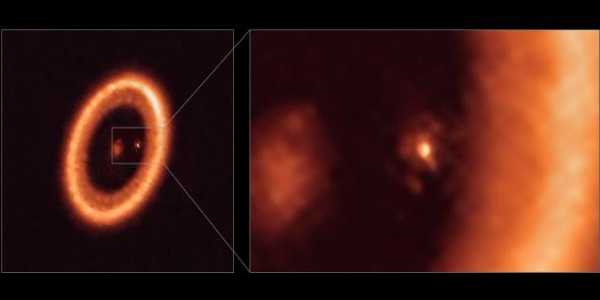
Planets form in dusty disks around young stars, carving out cavities as they consume material from the circumstellar disc in order to grow. A planet can acquire its own circumplanetary disk during this process, which contributes to the planet’s growth by regulating the amount of material falling onto it. At the same time, the gas and dust in the circumplanetary disk can collide to form progressively larger bodies, eventually leading to the formation of moons.
However, astronomers do not yet fully comprehend the complexities of these processes. “In short,” says ESO Research Fellow Stefano Facchini, who is also involved in the research, “it is still unclear when, where, and how planets and moons form.”
“Until now, more than 4,000 exoplanets have been discovered, but they have all been discovered in mature systems. PDS 70b and PDS 70c, which form a system similar to Jupiter and Saturn, are the only two exoplanets discovered so far that are still in the process of formation “explains Miriam Keppler, a researcher at Germany’s Max Planck Institute for Astronomy and one of the study’s co-authors. “As a result, this system provides us with a once-in-a-lifetime opportunity to observe and study the processes of planet and satellite formation,” Facchini adds.
The system’s two planets, PDS 70b, and PDS 70c were discovered using ESO’s Very Large Telescope (VLT) in 2018 and 2019, respectively, and their unique nature means they have been observed with other telescopes and instruments numerous times since.
Astronomers can now gain new insights into the system thanks to the latest high-resolution ALMA observations. In addition to confirming the detection of the circumplanetary disk around PDS 70c and studying its size and mass, they discovered that PDS 70b lacks clear evidence of such a disk, implying that PDS 70c starved it of dust material from its birth environment.
ESO’s Extremely Large Telescope (ELT), which is currently under construction on Cerro Armazones in Chile’s Atacama desert, will provide a deeper understanding of the planetary system. “The ELT will be critical for this research because, with its much higher resolution, we will be able to map the system in great detail,” says co-author and CfA Submillimeter Array (SMA) fellow Richard Teague.
The team will be able to get a full 3D picture of the system by looking at the gas motions surrounding PDS 70c with the ELT’s Mid-infrared ELT Imager and Spectrograph (METIS).

